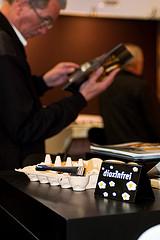Liquidate the company in several ways, each of which has its pluses and minuses:-First, there is the concept of compulsory liquidation of the company. Liquidation by a court decision is at entrepreneurial activities without a license, with gross errors and irregularities or as a result of unlawful activity prohibited by law. -Second, the enterprise can be liquidate voluntarily. The decision on liquidation shall advice the company's shareholders, then choose the commission for the elimination, which is responsible for the success of the entire process. Properly conducted voluntary liquidation can be considered firm, excluded from the state register of taxpayers, according to the law of the liquidated and terminated its legal existence.
The main disadvantage of this type Elimination – long term, the right to a full scan of company records and the risk of identifying possible defects and violations. -The third type of elimination is the most common today, alternative liquidation. It includes the acquisition, merger and bankruptcy, as a result of which the liquidated company ceases to exist. If you have worked, but in the process was sharply the need to eliminate, without the efforts of a competent specialist is necessary. Liquidate the company in several ways, each of which has its pluses and minuses:-First, there is a concept forced liquidation of the company.
Liquidation by court order is for a business without a license, with gross errors and irregularities, or as a result of improper activities prohibited by law. -Second, the company can be liquidated voluntarily. The decision on liquidation shall advice the company's shareholders, then choose the commission for the elimination, which responsible for the success of the entire process. Properly conducted a voluntary liquidation of companies allows us to consider the firm excluded from the state register of taxpayers, according to the law and the liquidated terminated its legal existence. The main disadvantage of this type of elimination – a long term, the right to a full scan of company records and the risk of identifying possible defects and violations. -The third type of Elimination is the most common today, the alternative liquidation. It includes the acquisition, merger and bankruptcy, which resulted in the company liquidated ceases to exist.
 The days when tourists are on the march slept on the ground, his head tucked under a jacket or bag, and no one will surprise the owner of the house, parking for the night on a cot, are long gone. Now nobody can imagine his home without a soft bed in a bedroom or a cozy sofa in the living room because the furniture has long been an integral part of our lives, as it is sofas and beds – a place for family recreation, be it reading a detective novel or watching a favorite movie. Undoubtedly, each of us needs in the comfort of home and comfort. Driven by the desire to create their own cozy home, we visit furniture shops, buy children's sofas for rooms beloved children, corner sofas in the living room and sofas for the bedroom. Sofas are divided into a number of characteristics: a set of brands, stylistic variety, wide range of materials and finishes, and price range. It is also important whether you buy a sofa: in order to carry out family night or for business negotiations.
The days when tourists are on the march slept on the ground, his head tucked under a jacket or bag, and no one will surprise the owner of the house, parking for the night on a cot, are long gone. Now nobody can imagine his home without a soft bed in a bedroom or a cozy sofa in the living room because the furniture has long been an integral part of our lives, as it is sofas and beds – a place for family recreation, be it reading a detective novel or watching a favorite movie. Undoubtedly, each of us needs in the comfort of home and comfort. Driven by the desire to create their own cozy home, we visit furniture shops, buy children's sofas for rooms beloved children, corner sofas in the living room and sofas for the bedroom. Sofas are divided into a number of characteristics: a set of brands, stylistic variety, wide range of materials and finishes, and price range. It is also important whether you buy a sofa: in order to carry out family night or for business negotiations. 